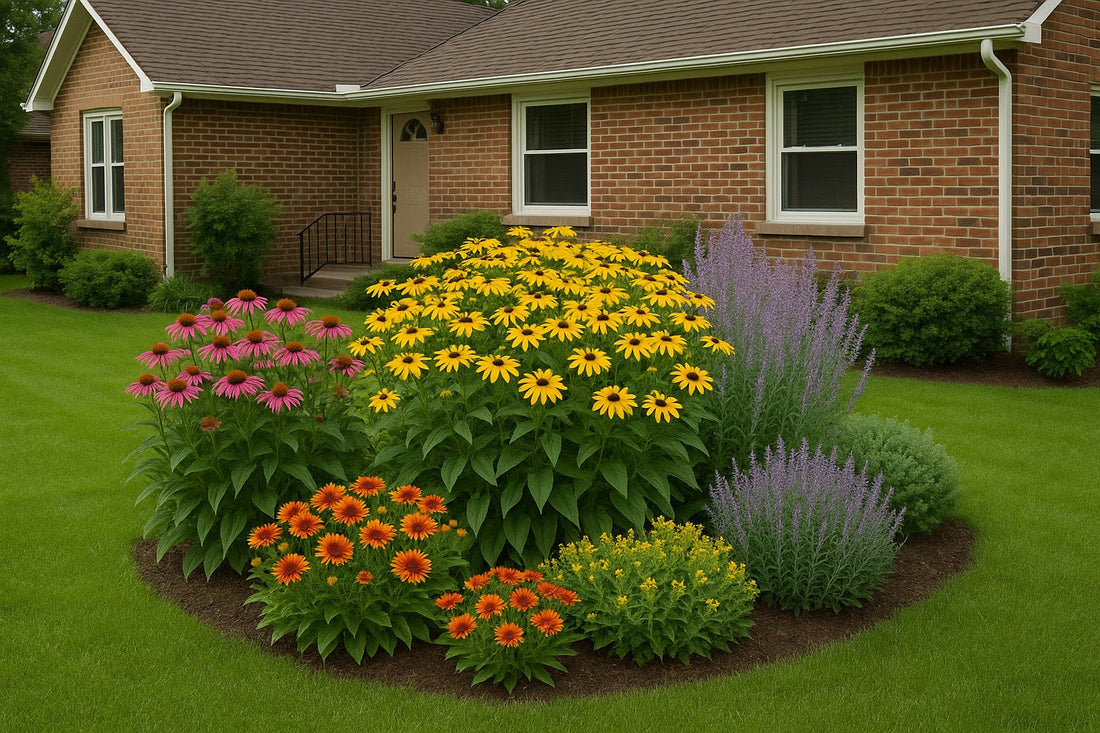
Convert lawn to garden the lazy way. No digging required.
Share
Do you want to add a perennial garden but dread the work getting a the ground prepared?
Here is a simple solution.
You don’t need to dig.
You don’t need to spray.
You don’t even need to break a sweat.
If you’ve got cardboard, you can start building a garden—today.
At Gardener Nation, we love this method because it’s simple, effective, and actually good for your soil. If you're ready to stop wasting weekends on mowing and start growing a garden that works for you—not the other way around—read on.
Why ditch the lawn?
Lawn is a resource hog. It guzzles water, fuel, fertilizer, and time. And for what?
A sterile green carpet that feeds nothing and no one.
Perennials flip that script. They feed pollinators. They come back every year. They require a fraction of the maintenance. And when you plant them the right way—using the cardboard method—you’re setting up your soil for long-term health and your garden for long-term success.
The cardboard method: Lazy gardening that actually works
This is the no-dig, no-till, no-chemicals way to build a garden.
- Step 1: Smother Your Grass: Lay down plain cardboard—no tape, no staples, no shiny print—directly over your lawn. Overlap the edges so grass and weeds can’t sneak through. You’re blocking light, not removing the grass. That’s the magic.
- Step 2: Wet It Down: Soak the cardboard. This helps it mold to the ground and start breaking down. Bonus: worms love it.
- Step 3: Add Organic Debris: Top the cardboard with 4–6 inches of compost, aged manure, leaf mold, wood chips, or a mix of everything. This layer adds nutrients and starts building real soil. You can plant directly into it, or let it settle for a couple of weeks first.
- Step 4: Plant Your Perennials: You’re ready. Drop in tough, reliable, zone-appropriate plants. These roots will push through the cardboard as it softens and start building a web of life below the surface.
How long does cardboard last?
Long enough to keep grass and weeds smothered for an entire season.
After that, it breaks down completely—no mess, no plastic, no clean-up. But here’s the key: to keep your garden weed-free in the long run, you’ll need a living mulch (like groundcover perennials) or organic mulch (like bark or leaf debris) to maintain the barrier year after year.
Why this works
- No Soil Disruption: Digging destroys soil structure and exposes dormant weed seeds. Cardboard keeps the soil ecosystem intact while letting you build on top of it.
- Weeds Can’t Compete: Without light or air, weed seeds and grass roots are out of luck. Perennials get the head start.
- Healthier Soil, Less Watering: Compost and mulch retain moisture, reduce watering needs, and feed the soil every time it rains.
What Should You Plant?
We’ve got hundreds of hardy, zone 4 perennials ready to go.
Get your sun plants for beginners here.
Your weekends just got a whole lot easier.
